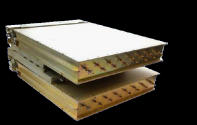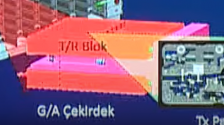Some more info form Aselsan magazine latest edition:
- New Kalkan radar called Kalkan-400TWTA under development.
- Aselsan's first AESA radar was the MAR (Kalkan-100G) radar.
- ALP-100G uses the same radar architecture as the ALP-300G.
- STR-700G is primarily used as an arty locating radar, but can also be used as a medium range early warning radar.
- The arty detection capabilities of STR-700G have been integrated into the ALP-100G and thus it can also act as an arty locating radar.
- The original Serhat radar (STR-300G) was designed for locating mortar fire, the newer Serhat-Dual (STR-400G) can detect artillery, MLRS, mini/micro UAVs and paragliders.
- Cenk-200N is a "4D" radar for both air and surface search.
And more but can't be bothered at least for now.
One thing I would like to add about the newer/upgraded variant of the MAR radar now called Kalkan-200G, it's naval equivalent (Cenk-200N) has a higher range (100vs70km) has more advanced features (better ECCM), but more importantly it is "4D" meaning it can electronically scan both in elevation and azimuth as opposed to the -100 variant which could only scan electronically in elevation.
It wasn't specifically stated but, one can expect the Kalkan-200G to have the same capabilities as it naval equivalent, bar the capacity to detect surface targets.



